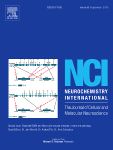Every year, millions of people consume tons of dietary supplements. In particular, the claimed ergogenic properties of β-alanine and taurine (2-amino-ethanesulfonic acid) have made these amino acids extremely popular particularly among young people and they are widely used by athletes world-wide. Taurine is abundant in many mammalian tissues and has been implicated in a range of different physiological functions. It has a well-documented regulatory role in maintenance of osmotic pressure and preservation of structural integrity of biological membranes. In the nervous system, taurine may modulate protein phosphorylation, serve as a trophic factor, or act as a neurotransmitter / neuromodulator. In several species, taurine deficiency has been linked with specific disease states and also in humans altered levels of taurine has been reported in different conditions, including ADHD and autism. The related amino acid β-alanine, generated from aspartate, and its dipeptide derivative carnosine have also been proposed to have many health benefits.
In this article we have tried to expand the knowledge base for these substances by provide new fundamental insights into the biosynthesis of these amino acids and their derivatives in mice and man, in particular regarding the roles of the biosynthetic enzymes CSAD and GADL1 at the cellular and organ level and determine their expression levels during pre/postnatal development.
In the present study, we compared the catalytic properties, inhibitor sensitivity and expression profiles of GADL1 and CSAD in brain tissue. In mouse and human brain we observed distinct patterns of expression of the PLP-dependent decarboxylases CSAD, GADL1 and glutamic acid decarboxylase 67 (GAD67). CSAD levels were highest during prenatal and early postnatal development; GADL1 peaked early in prenatal development, while GAD67 increased rapidly after birth. Both CSAD and GADL1 are being expressed in neurons, whereas only CSAD mRNA was detected in astrocytes. Cysteine sulfinic acid was the preferred substrate for both mouse CSAD and GADL1, although both enzymes also decarboxylated cysteic acid and aspartate.
In silico screening and molecular docking using the crystal structure of CSAD and in vitro assays led to the discovery of eight new enzyme inhibitors with partial selectivity for either CSAD or GADL1. Lithium had minimal effect on their enzyme activities. In conclusion, taurine biosynthesis in vertebrates involves two structurally related PLP-dependent decarboxylases (CSAD and GADL1) that have partially overlapping catalytic properties but different tissue distribution, indicating divergent physiological roles. Development of selective enzyme inhibitors targeting these enzymes is important to further dissect their (patho)physiological roles.
Mammalian CSAD and GADL1 have distinct biochemical properties and patterns of brain expression
